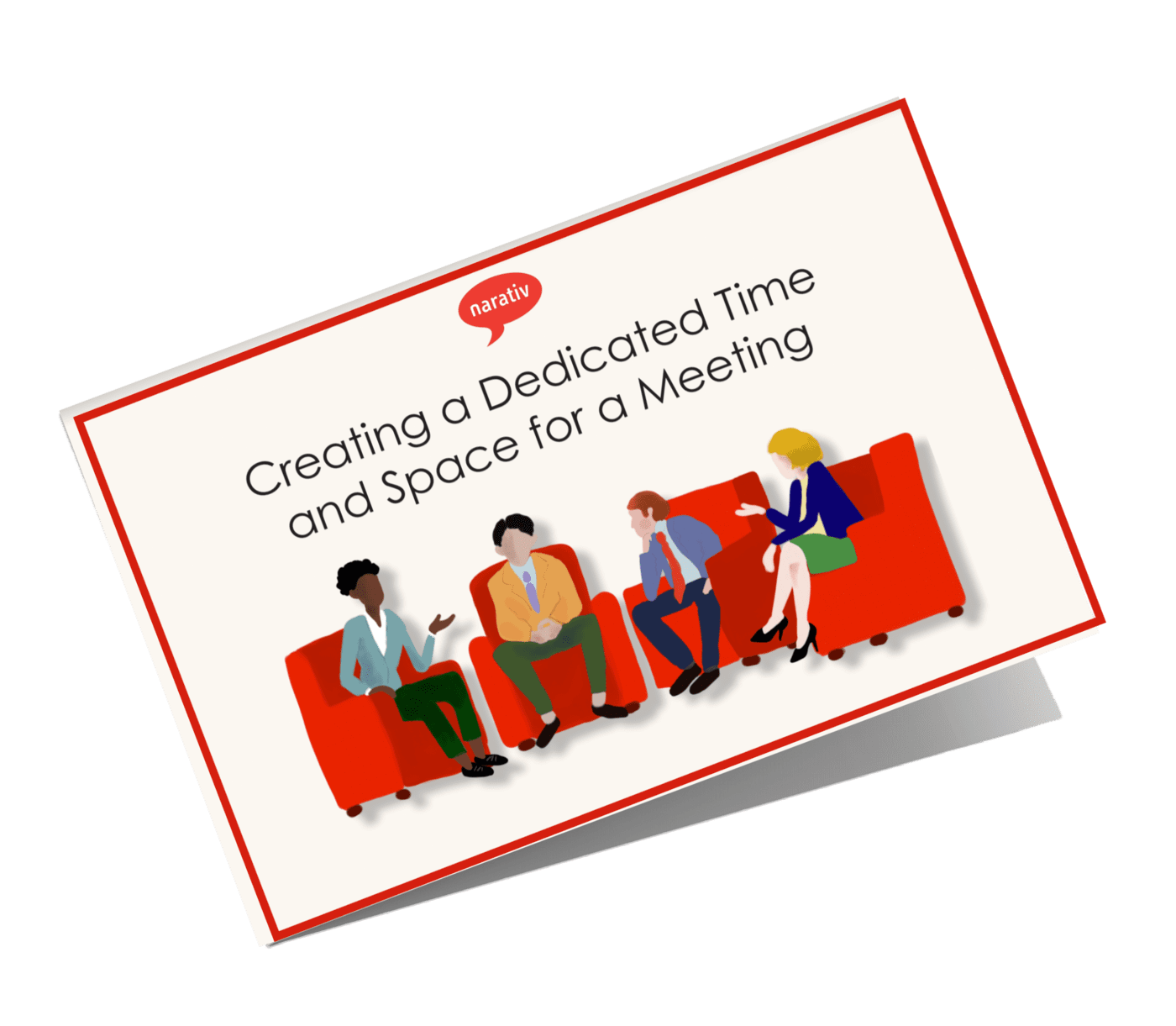No matter how many meetings you’ve conducted in your life, delivering a presentation always comes with a certain amount of pressure. Business presentations have developed a reputation for being a necessary but dull part of any workplace, and most of us have dozed off in enough of them to know that delivering an engaging presentation can be a tall order.
Effective presentation creation revolves around the necessity of delivering all the important information without being too dry. Because Narativ’s focus is experience-based storytelling rather than data delivery, you might assume we wouldn’t have much to offer in this arena. Fortunately, this is far from the case.
Even if the nuts and bolts of presentation creation seem far removed from storytelling, you can still use principles of storytelling to bring your presentations to life and get your audience engaged and ready to take action—no matter how dull the topic.
Storytelling Without Stories
Generally speaking, storytelling involves delivering information through the vehicle of a related life experience. If you have an experience relevant to the presentation’s topic, you can work in that story as you see fit, but it is not an absolute necessity for effective presentation creation.
Rather than including a variety of personal anecdotes, the key to a great presentation is to think of it as a story. Even without injecting relatable experiences, your presentation can still be structured to include a narrative arc, compelling stakes, and an engaging, authentic delivery that draws your audience in.
How can you accomplish this? Here are 6 steps that can help you make a story out of your presentation.
1. Ask What’s at Stake
Any compelling story has stakes the audience can quickly and clearly understand. Business presentations may not include the kind of stakes you might expect from a normal story (like all the classic movie troupes, such as whether the couple will be together in the end). However, you can still give your audience a clear sense of what stands to be lost or gained from the information you are presenting using the principles of storytelling.
You want to make sure you set up the stakes at the beginning of your presentation to hook your audience right away. A good way to do this is to describe how things have been done in the past and which things weren’t working very well. Show the impact of past failures and then make it clear your presentation is about changing these results. With this framing, the stakes are automatically raised and the audience leans in.
2. Use the 5 Senses
A storytelling tool we often use in Narativ training is the “what happened” camera. This involves telling a story through all of the 5 senses to draw the audience into the heart of the action. This is integral to an engaging story because these sensory details are what people remember most.
In your process of presentation creation, think about the things people said or did. Imagine you’re watching the scene from your very own “what happened” camera. Identify the various protagonists who contributed to your ideas and the concepts you’re presenting so you can use sensory details to bring them to life.
Hearing about people and relationships is very engaging for audiences of all types, so don’t hesitate to say how you came up with an idea and who helped you along the way. Name these supporting characters and tell what they said or did and what you said or did in response as a result of their contributions. Paint the picture of what happened for your audience so they feel like they too can experience with their 5 sense firsthand.
3. Consider the Rate of Revelation
Think carefully about which information you will reveal at which point of your presentation. Try to avoid front- or back-loading your presentation. Too much information all at once can muddy the stakes and cause the audience’s interest to waver quickly.
A good cadence spreads the information throughout your entire presentation. You may start by revealing one thing at the beginning. For instance, begin by demonstrating what was wrong with how things were done before. Then, in the middle of the presentation, explain something you discovered that could potentially make the situation better. At the end, reveal the solution and explain what it means to the audience.
By spacing out the information like this, the audience will have a far easier time following the action and remembering the key points—and you will have an easier time keeping their interest.
4. Edit Down to the Essentials
You can also use the principles of story as an editing tool. In this step, consider which details are truly necessary to deliver the information. When you look at the presentation as a whole, ask yourself “Does everything I’m presenting move the presentation toward my goal?”
Asking this question throughout your presentation creation process will help you shed extraneous details and get directly into what is most important, which will make it easier for your audience to understand and remember what you need them to know.
5. Connect with Your Audience
When you tell a story a primary goal should always be building connection with your audience. It’s critical to consider who your audience is and how the presentation is directly relevant to them. In this context, that means constantly referring to how the information benefits them, how they can contribute to the process, and why it’s important for them to listen to you and act on the information you’re providing.
You’ll find that fewer people will tune out to check their phones when your presentation continually circles back to their specific involvement, so be sure to keep audience connection front of mind at every phase of your presentation creation.
6. Speak from Your Heart
Don’t spend too much time explaining things. Instead, go right to the heart of what you’re trying to express—focus on what is most important and interesting for your audience.
If there are things in the presentation you don’t think are important or interesting it will show through in the energy of your presentation. Your audience will likely walk away thinking those elements are not worthy of their time (if they remember them at all!).
Trust your instincts and take out any unnecessary explanations. This will not only keep your presentations shorter, but it will also make them far more impactful on the whole.
Become a Master of Presentation Creation
Though it may seem like a daunting task to turn a presentation full of dry information into a story that will engage the entire conference room, the difference can be a simple matter of changing the shape of how you deliver the information.
As you follow these steps, you may find your presentations come to life more easily than before and that your process of presentation creation becomes a lot more enjoyable for you and the final result far more interesting for your audience.
If you would like to learn more about how Narativ’s story training can help improve your presentations, visit us here.




